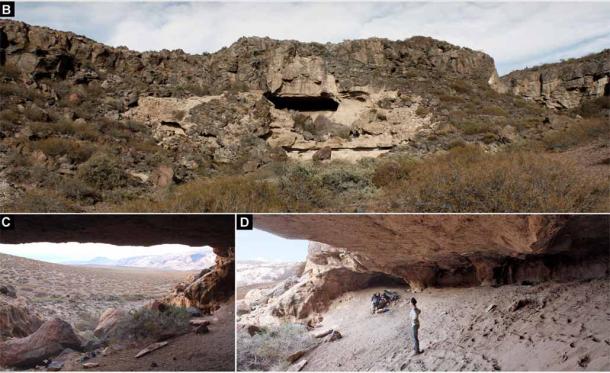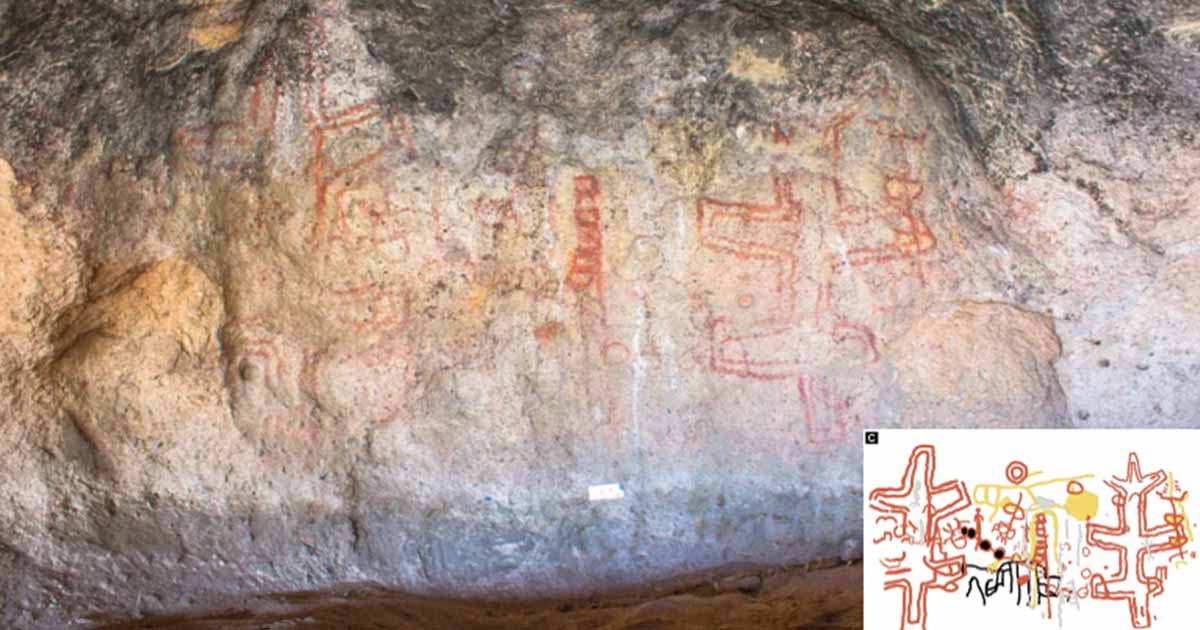Patagonia Rock Art Reveals Ancient Messages Transmitted Across Generations
Cave painting in the southern areas of South America may have started 8,200 years ago, several millennia earlier than previously thought. The cave art, located in Patagonia, Argentina, was thought to previously be only several thousand years old, but new research shows that some of this cave art was created during the late Holocene epoch (11,700 years ago – present).
- Ten Mysterious Examples of Rock Art from the Ancient World
- DNA Analysis Reveals Surprising South American Migration Patterns
What’s In A Comb?
With nearly 900 human figures, animals, and abstract designs painted, the scientists studied one of the cave’s most puzzling motifs – a comb-like pattern, which has been dated the earliest of them all.
While the significance of the comb motif remains obscured by the passage of time, researchers speculate that it may have played a role in preserving the collective memories and oral traditions of the peoples who navigated through this exceptionally hot and dry period.
For millennia, cave artists persisted in depicting a recurring comb design using black pigment, even during periods when little other human activity occurred at the site. Recent dating of these comb-like depictions in an Argentine cave reveals that they were part of a rock art tradition spanning over 3,000 years, concluding approximately 5,100 years ago, reveals the new study published in Science Advances.
“We got the results and we were very surprised,” said Guadalupe Romero Villanueva, an author of the study and an archaeologist at the Argentine government agency CONICET and the National Institute of Anthropology and Latin American Thought in Buenos Aires. “It was a shock, and we had to rethink some things,” she added, quoted in an NYT report.
To ascertain the age of the artwork, archaeologists utilized a methodical approach. They carefully chipped away several small fragments of black pigment from the drawings to determine the age of the cave art. Since the pigment was derived from plant materials, scientists employed radiocarbon dating techniques to establish its age. The analysis revealed that the black paint likely originated from charred wood, possibly from burned shrubs or cacti.
"It's usually really hard to date rock art unless it has an organic component, otherwise there really isn't any material that you can date," study co-author Ramiro Barberena, an archaeologist at Temuco Catholic University in Chile and CONICET, told Live Science. "[The cave] is not the oldest occupation in South America, but it is the oldest directly radiocarbon-dated pigment-based rock art in South America."
- Tales of a Two-headed Giant: Are Legends of Patagonia’s Kap Dwa Real?
- Oldest and First ‘Wampo’ Ritual Canoe Burial Found in Argentina

(A) Original photograph and digital enhancement with Dstretch of the complete rock art panel. (B) Original photograph and digital enhancement with Dstretch of the dated black comb-shaped motif. (C) Digital tracing of the complete rock art panel showing the dated black comb-shaped motif underlaying a series of superimpositions. (Guadalupe Romero Villa/ Science Advances)
Patagonia: A Harsh Climate Springing Collective Survival
Humans did not reach Patagonia, located at the southern tip of South America, until approximately 12,000 years ago. At the Cueva Huenul 1 cave site, these early settlers flourished for generations, leaving behind evidence of their habitation. However, around 10,000 years ago, the region experienced increased aridity and harsher conditions due to climatic changes. Correspondingly, the archaeological findings within the cave became scarce for the following millennia, indicating that environmental pressures likely led to the abandonment of the site.

View from CH1 of the volcanic landscape of north western Patagonia. (Guadalupe Romero Villa/ Science Advances)
The researchers thought it remarkable to find such a significant amount of rock art as is in this cave. In the surrounding landscape, there were several rock art sites, but none of them had the same level of diversity in shapes and colors as found there. Thus, it was evident that the place had likely been a hot spot for communication in the past and crucial for the survivability of those societies.
The connections between groups of ancient humans who engaged in the creation and sharing of this motif likely bolstered their chances of survival amidst the challenges posed by this harsh environment, through collectivized memory and oral tradition.

Views of the cave’s geology and topography. (Guadalupe Romero Villa/ Science Advances)
"There were large parts of the landscape without water, but in order to survive as hunter-gatherers, they would have needed to stay connected," Barberena said. "It would've been hard to make it on your own, so an exchanging of information was important."
The drawings spanned a period of approximately 3,000 years within a single motif, suggesting a transmission of information across multiple human generations who inhabited the same region and site! Although it wasn't clear whether the cave art was created as part of a ceremony or an intergroup meeting, he believed it was part of a human strategy to build social networks across dispersed groups, contributing to making those societies more resilient against a very challenging ecology.
Top image: Archaeologists discovered certain motifs in Patagonia, Argentina, dating back more than 8,000 years ago. Source: Guadalupe Romero Villa/ Science Advances
By Sahir Pandey
References
Bower, B. 2024. These South American cave paintings reveal a surprisingly old tradition. Available at: https://www.sciencenews.org/article/south-american-patagonia-cave-paintings-surprisingly-old.
Ferreria, B. 2024. Mysterious Pattern in a Cave Is Oldest Rock Art Found in Patagonia. Available at: https://www.nytimes.com/2024/02/14/science/oldest-cave-art-patagonia.html.
Nalewicki, J. 2024. Ancient rock art in Argentinian cave may have transmitted information across 100 generations. Available at: https://www.livescience.com/archaeology/ancient-rock-art-in-argentinian-cave-may-have-transmitted-information-across-100-generations.
Villanueva, G.R. 2024. Earliest directly dated rock art from Patagonia reveals socioecological resilience to mid-Holocene climate. Science Advances, 10 (7). Available at: DOI: 10.1126/sciadv.adk4415.

















